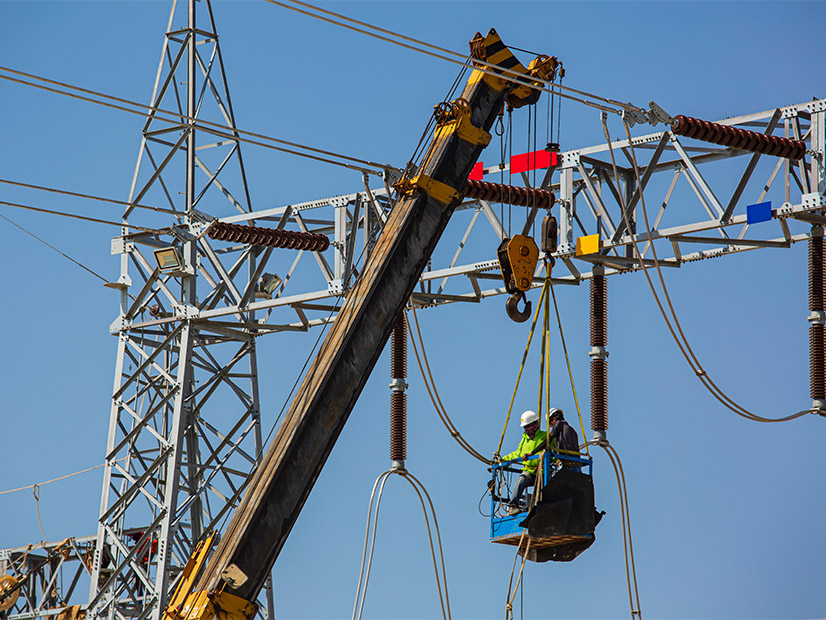
The Department of Energy on Thursday proposed a set of rules to streamline the federal permitting of certain onshore electric transmission projects.
CITAP, the Coordinated Interagency Transmission Authorization and Permits program, would establish a two-year timeline for federal review of transmission proposals. It would set deadlines for permits and authorizations but also seek to ensure local communities, tribes and other stakeholders have an opportunity for engagement, DOE said in a news release.
DOE’s Grid Deployment Office would administer CITAP and is seeking public comment on the Notice of Proposed Rulemaking issued Thursday.
CITAP would be one response to a pressing issue — the lengthy process for adding the infrastructure that is critical to greater electrification of the U.S.
Many clean energy projects proposed nationwide are slowed, stalled or even canceled because of the time and cost of securing interconnection. A 2022 DOE report found more than 930 GW of generation and more than 420 GW of storage in transmission queues nationwide.
That will increase as fossil fuels are replaced with electrons. DOE said independent estimates find that transmission capacity will need to increase 60% by 2030 and perhaps triple by 2050.
The CITAP proposal grows from a May 2023 memorandum of understanding signed by DOE and eight other federal agencies. DOE draws its authority to lead the process from Section 216(h) of the Energy Policy Act of 2005.
CITAP would not replace state or local permitting, nor would it circumvent any federal laws. Instead, it seeks to streamline the regulatory portion of a process that can extend more than a decade from start to finish.
Under the proposed rulemaking:
-
- DOE would identify all entities with a role in a given transmission project, lead an iterative process to ensure the developer’s applications for federal authorization are ready by the binding timelines to be established and work with relevant agencies to prepare a single environmental review document for use by all of the federal entities with oversight on the project.
- Developers would have to participate in an integrated interagency preapplication process that would provide a uniform mechanism for them to identify constraints and opportunities, gather information, engage with local stakeholders and prepare a plan for public engagement throughout the life of the project.
- And there would be a standard schedule for all of this to unfold — DOE produced a draft version as part of the proposal. The schedule would be a template, however, not a rigid timeline. Each proposal would receive a project-specific schedule factoring in location, scope and potential impacts.
Reaction
Clean energy industry and advocacy organizations welcomed the proposal, as far as it goes.
“ACEG strongly supports DOE’s action to improve coordination and transparency in the federal permitting process,” said Christina Hayes, executive director of Americans for a Clean Energy Grid. “Implementing a one-stop-shop for agency reviews and setting strict deadlines for this process will represent a fundamental leap forward from the current system, which requires applicants to juggle each agency’s timeline separately and can sometimes delay a project by years. The nation needs more transmission, and we need it as soon as possible to improve electric reliability and lower costs for American households. This rule will get us closer to the finish line.”
“ACP appreciates DOE’s efforts to streamline the process for permitting transmission lines, and we look forward to reviewing and commenting on the proposed rule,” said American Clean Power Association Vice President of Markets & Transmission Carrie Zalewski. “While this is a positive step, it’s critical that Congress build upon these actions and tackle comprehensive, meaningful permitting reform that, among other things, improves the permitting process for high-impact transmission lines.”
“Transmission developers are facing inefficient and lengthy review processes to getting projects permitted and approved, leading to increased costs and delayed timelines,” said Caitlin Marquis, managing director at Advanced Energy United. “Electric transmission lines are the essential backbones of our power grid, and building more transmission leads to lower energy costs and improved grid reliability. A more efficient permitting program that maintains essential review processes will provide more certainty for developers and support a stronger, more resilient power grid.”

